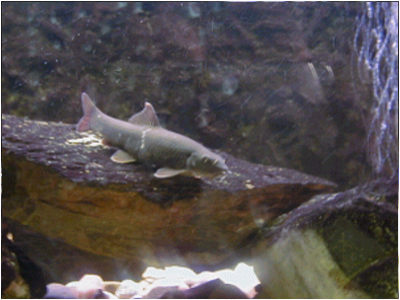|
|
Maintenance

Maintenance
The maintenance and cultivation of the fish is easy and simple.
Aquarium/Tank
The ideal volume of an aquarium is 10 cubic liters for each adult fish. For the smaller fish, smaller aquariums can be used. The tank's upper-surface should be completely and tightly covered, so the livelier of the fish can not jump out of the tank.
Bottom:
The bottom should be filled with 5 to 20mm (about 1 inch) of gravel. A few large stones can also be placed on the bottom of the aquarium. The aquarium must be equipped with a size-relative filter- and heating-system.
Water:
After filling the aquarium, the water should stand for three days with the filter running the whole time. This time is crucial in the growth of bacteria Flora, and in the extraction of possible harmful substances such as chlorine. To shorten the duration of the standing time, specialized water treatment substances available at pet shops, can be used. The recommended water temperature, suitable for the well-being of the fish, is ca. 25'C.
Plants:
The addition of plants is possible, but not completely necessary. The most favorable are big-leafed and robust plants, which offer the fish additional natural and valuable food source in the form of algae growth on the leaves.
Lighting:
If natural light is not readily available, supplementary lights in the form of special HQ-lights or aquarium specific fluorescent lights are necessary.
Food:
In regards to food, by no means do the fish have great demands. Frozen or live mosquito larvae, Tubiflex, Mysis such as nursery-fish-sticks, fish-food flakes, dry shrimp, and red mosquito larvae can be fed to the fish. The food specially recommended for the younger fish is fish-food specifically made for young fish and frozen Red Plankton and Cyclops. The Suctorial-Barbels need to be regularly fed. It is necessary to have a predetermined and set amount of food for each feeding. It is also important to give the fish the food at a moderate amount, so all the food can be picked up within the shortest amount of time possible. Otherwise, if there is too much food floating around, it can cloud and dirty the water. Since the animals are always ready for the consumption of food, it is very important to see to it that the fish do not get over-fed. In order to avoid the problem of over-feeding, one day of fasting per week can be implemented. In extreme cases, the fish can have a five day feeding brake without repercussions (the fish can live off of the aquarium's algae during such a time.)
|